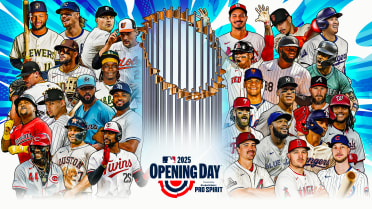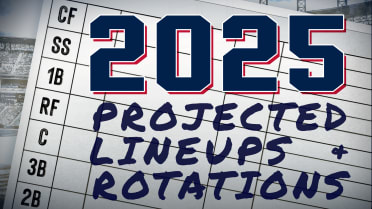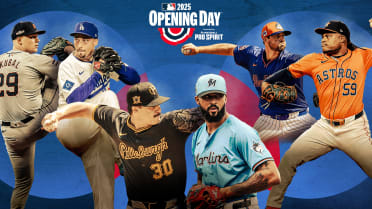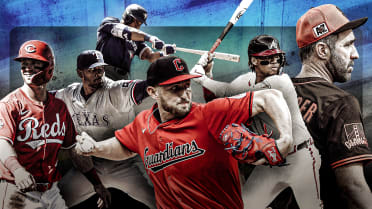With approximately 80% of the 2024 season in the books, we have a pretty good idea of how the major award races are going to shape up.
Both Cy Youngs have seemingly clear leaders, with lefties Chris Sale (NL) and Tarik Skubal (AL) the obvious front-runners in each league. Both Rookie of the Year races are still up in the air thanks to all the young talent in the game, to the point that you could make a case for a half-dozen players in each league, and the remaining month-plus of the season will have a lot to say about what happens.
But for Most Valuable Player? Buckle up.
In the American League, we have what looks to be a race between a pair of players having all-time great seasons: Aaron Judge and Bobby Witt Jr. (That list somehow doesn’t include Juan Soto and Gunnar Henderson.) In the National League, we have a somewhat down year for overall greatness, which has led to something like a four-way race, depending on how you value such things – with an extremely big caveat for a fifth player, too.
As the end of August nears, the Wins Above Replacement (WAR) leaderboards (via FanGraphs) tell quite the story. (These are through Sunday's games.)
American League
- 9.5 Aaron Judge
- 9.0 Bobby Witt Jr.
- 7.8 Juan Soto
- 6.7 Gunnar Henderson
- 6.0 Jarren Duran
National League
- 6.5 Francisco Lindor
- 6.3 Shohei Ohtani
- 5.9 Elly De La Cruz
- 5.4 Ketel Marte
- 4.3 Marcell Ozuna
Since tiny decimals of WAR don’t really matter, you can easily say that it’s a tie, in both leagues at the same time, with Witt and Judge posting nine-win seasons and Lindor and Ohtani posting six-win seasons – so far, anyway.
That, more so than arguing for any particular candidate’s case right now, is what’s interesting here. How rare is it to have a pair of such tightly contested cases? What might it mean for the outcome? And, perhaps most importantly: How much should we care about WAR? Because many people simply do not.
Let’s do that last part first: We care because it’s factored into the process voters use when deciding.
Earlier this month, Dan Syzmborski, the creator of the ZiPS projection system, went back through the decades to see how well WAR matches up with the actual award winners. As you’d expect, there’s a relatively weak connection from back in baseball’s “golden age,” because even though we can go look up WAR totals from, say, 1956 right now (Mickey Mantle, by a lot), it obviously wasn’t on the minds of voters at the time.
That’s changed, however, since the dawn of the 21st century.
“If you only look at votes since 2000,” wrote Syzmborski, “all of a sudden, WAR goes from an irrelevant variable to one of the key components in a voting model,” later adding that “WAR comes out as one of or the most crucial MVP variables today.”
Award voting, we should be sure to emphasize, should not simply be a “rank the WAR” exercise, especially when the races are this tight. It’s a starting point, not an ending point. But it’d be foolish to think that it’s not a metric that voters value highly either.
How rare is this?
Since, as Syzmborski studied, WAR wasn’t really a factor in the 20th century, let’s just focus on the years from 2000 to the present. We’ve had 46 MVPs given out since then, and it’s easy to see how many times we’ve had a situation like the one we’re steering into: once.
- How many times have the WAR leaders in a league been within 0.5 WAR? 11.
- How many times has that happened in both leagues at the same time? Just 2009.
In 2009’s NL race, Albert Pujols was ever so slightly ahead of Chase Utley via WAR, but with compelling edges in more traditional stats like batting average and RBIs, he took home a unanimous vote over Utley’s all-around greatness – which feels a lot like this year’s AL race. In the AL that year, Joe Mauer beat the Rays' Ben Zobrist for much the same reason, which is “when you’re a catcher hitting .365 and slugging .587, probably not a lot else matters.”
So to answer the question of how often we see races this tight, the answer is: barely ever.
Why do the numbers say what they do in: the AL
With respect to Soto – who’d probably be the runaway favorite if he were still in the NL – and Henderson, this is entirely about Judge vs. Witt. Like that 2009 NL race, Judge is highly likely to win if only because he’s on track to challenge 60 homers again, and his overall performance at the plate is merely “the best hitting season in history aside from Babe Ruth and Barry Bonds,” and at a certain point that’s all that’s going to matter.
But because Witt is rated as the second-most valuable defender in baseball (behind only Giants catcher Patrick Bailey), and because he’s likely going to have a 30-steal season, we can at least share why WAR considers them so evenly matched – even if that’s not likely how the balloting will go.
Comparing them, you’ll see that Judge is worth 84 offensive runs to Witt’s 52, which makes sense; even with Witt’s speed advantage, no one would argue he’s as dangerous a hitter as Judge. But Witt gets +17 runs on defense, both for his skill and the value of elite defense as a shortstop; Judge gets -10 on defense, in part because his outfield/DH combo is less important than shortstop, and in part because he just hasn’t played terribly strong defense.
Those numbers also help answer the question of how much defense is actually factored into WAR, as often comes up, given that 2024's best hitter has compiled about four times as many runs as 2024's best non-catcher defender. Offense matters, a lot, more than anything else.
From there, it's simple: Judge’s 84 runs (offense) and -10 (defense) get him to 74 runs; Witt’s 52 (offense) and 17 more (defense) get him to 69 runs too; throw in some adjustments for league and replacement level that would affect them evenly, and that’s how they’re rated just about evenly. Defense matters, a lot. So does having an all-time great hitting season. When Judge wins unanimously or close to it -- and he will! -- that doesn't mean that Witt wasn't close; it just means that voters aren't given the opportunity to clarify if their first place vote is by a lot or by a little. It's just "a vote," one both players are deserving of.
Why do the numbers say what they do in: the NL
It’s a little different here, because there are a few very good seasons but no all-time great years, in part because Ohtani is a DH-only player – no full-time DH has ever won MVP – who has posted an uncharacteristically slow .215/.275/.559 line in August.
Ohtani's status as getting to 40/40 before the end of August -- and since he is by far the best offensive player -- probably still makes him the leader, while Marte’s injured ankle likely takes him out of the hunt, and convincing voters that De La Cruz is still a quality defender (he is!) despite a league-leading errors total is probably a bridge too far.
So we’re likely looking at Ohtani vs. Lindor, and the comparison is a pretty similar one as in the AL. Ohtani is a much better offensive player (+54 runs to +28 runs), yet Lindor’s excellent shortstop defense is worth far more than Ohtani’s no defense at all (+15 runs to -14 runs), and so the resulting total is about even, WAR-wise. If Ohtani gets to something like 50/50, it won't matter, but again: elite shortstop defense matters.
But there’s a dark horse, too, in Atlanta's Ozuna, who is hitting similarly well as Ohtani, but is a considerably less valuable baserunner – he’s yet to steal even one base – and so he doesn’t have much of a case, given that they’re each playing DH. Unless, that is, he wins the Triple Crown.
As of Monday morning, Ozuna led the NL in batting average, by two points over the injury-slowed Luis Arraez. He’s four home runs behind Ohtani; they're tied in RBI. Only 10 players have won a Triple Crown since RBIs became official in 1920, though as it turns out, more than a few did not win MVP in that year.
If Ozuna does it this year, it’ll be a very interesting conversation about what still matters in voting – WAR, or batting average? It will be, regardless, another data point in an incredibly close race.
Mike Petriello is a stats analyst for MLB.com, focusing on Statcast and Baseball Savant, and is also a contributor to MLB Network.




